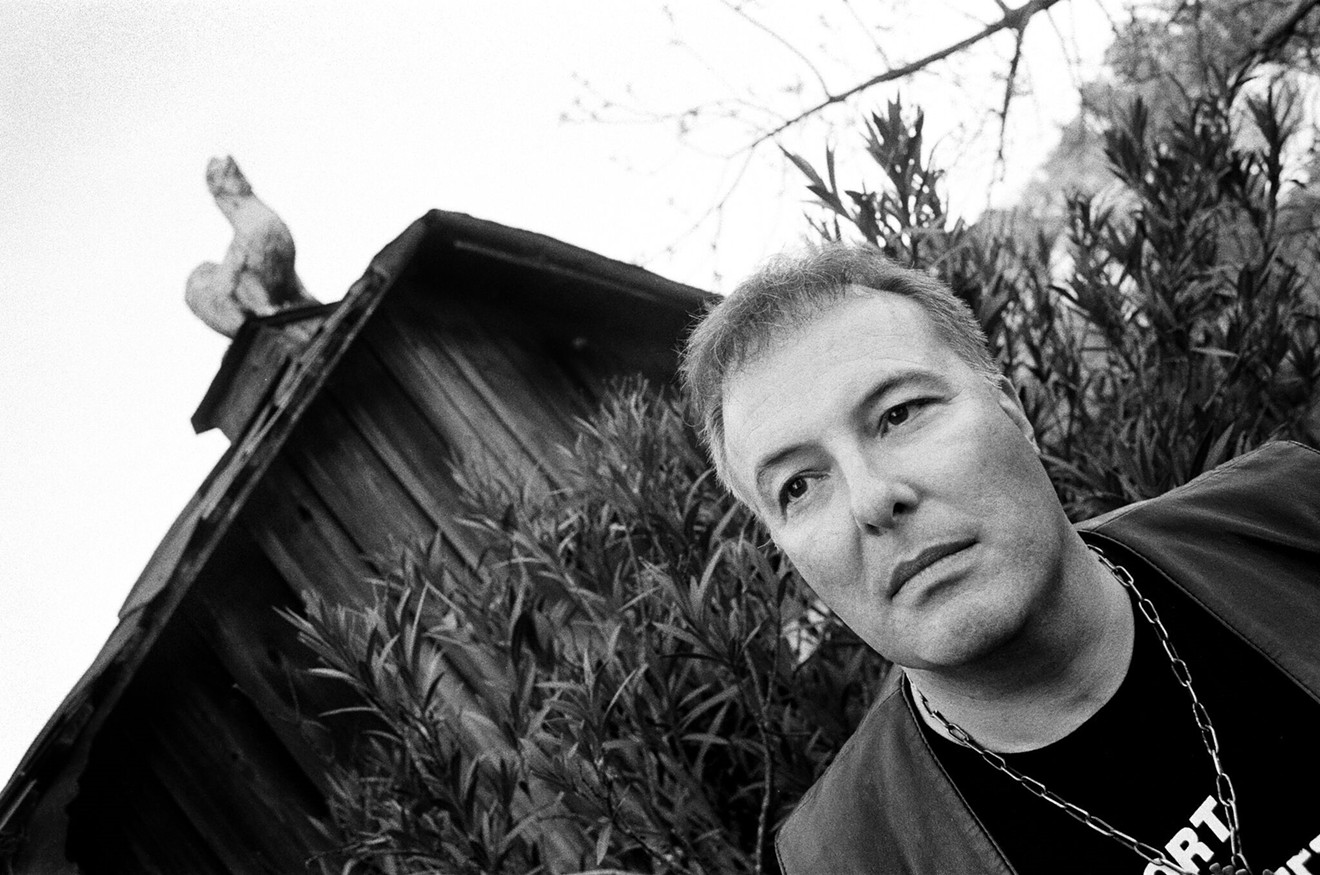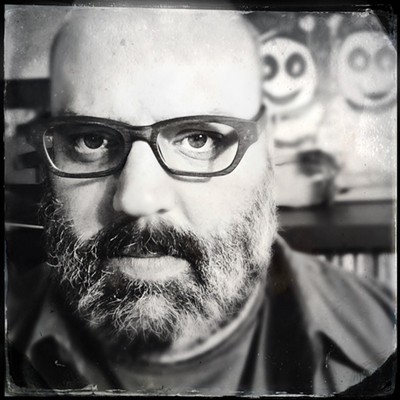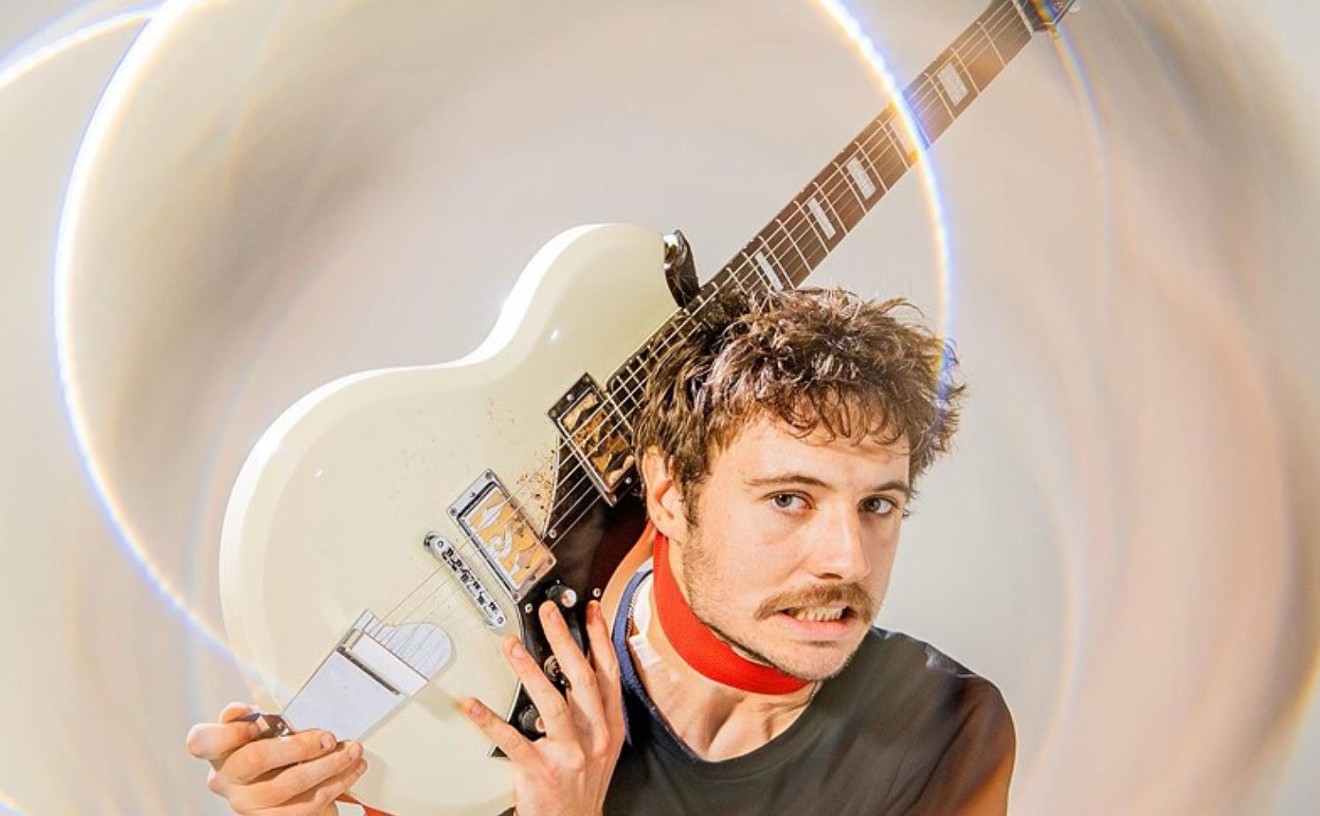As a teenager in the mid-1970s, former Dead Kennedys frontman Jello Biafra played his first DJ set during his lunch hour at Boulder High School, piping odd music into the cafeteria to the irritation of his fellow students.
On a ’50s-themed day, Biafra played composer David Amram’s 1973 number “The Fabulous Fifties.” He also blasted the Stooges’ “Raw Power.” And “‘Brown Shoes Don’t Make It,’ by the Mothers of Invention — that didn’t go over well,” recalls the punk legend, now sixty. “The jocks broke the door down over that one.”
He was crestfallen when people didn’t come running to him, asking him about all the cool tunes he was spinning. Instead, they requested mood music or hits by Elton John, Fleetwood Mac, Bachman Turner Overdrive and Lynyrd Skynyrd.
Born Eric Boucher, Biafra was raised six blocks from where JonBenét Ramsey was murdered in 1996. He began building his vinyl collection in the eighth grade, when his parents gave him a record player for Christmas. He started off with Steppenwolf and Creedence Clearwater Revival before friends took him to Trade a Tape record store, where he bought albums by the MC5, the Stooges, the Doors and the 13th Floor Elevators.
Trade a Tape was also where he found the Ramones’ 1976 self-titled debut in a dollar bin the week it came out; the band cracked him up with lyrics like “Beat on the brat with a baseball bat” and “Now I want to sniff some glue.”
In January 1977, at age eighteen, Biafra joined Trade a Tape’s manager, Rick Scott, and others at Ebbets Field in Denver for a Ramones show.
“We were in no way prepared for what was about to hit us,” Biafra says. “Denver and Boulder were ground zero nationwide — testing ground for the absolute worst of FM and country rock and cocaine cowboy dreck. I mean, who was going to be the next Firefall? Who was going to be the next Dan Fogelberg? All it did was fuel my wrath about the ’70s and had me trying to find more Stooges and Pink Fairies and those kind of bands — and get some kind of fallout shelter in my bedroom against what was going on outside. You can imagine what I thought of disco.”
Biafra says the cocaine cowboy establishment glitterati was there for the headlining act Nite City, a band that included Doors keyboardist Ray Manzarek and bassist Nigel Harrison, who would later join Blondie. He remembers the guys in the audience with their neatly trimmed Kenny Loggins beards, feathered hair and corduroy jackets with patches on the elbows, and women imitating Joni Mitchell’s style.
“Then out come these four degenerate-looking guys in black leather jackets,” Biafra says of the Ramones. “And one chord on Johnny’s guitar, and you knew it was going to be way louder than anybody realized. We weren’t sure we could handle it. Then they just blew the roof off the whole building. Suddenly the Ramones weren’t funny anymore. This was the most intense live experience I’d ever had with any band in my life. I was thinking, ‘My God, this is so powerful but so simple; anybody could do it. Even I could do it. Maybe I should do it.’ And the gears began to turn in me, and a lot of other people, too.”
The seed was planted, but it would be another year and a half before Biafra joined the Dead Kennedys in San Francisco, a city he’d fallen in love with during a car trip with his family a decade or so earlier.
“I just kind of thought, even then, I should really be out there,” Biafra says.
In the fall of ’77, he enrolled at the University of California at Santa Cruz and started going up to San Francisco on the weekends to see punk bands like Avengers, Dils and Zeros.
“They were much fiercer stuff than I had seen in Colorado, for the most part,” Biafra says. “Plus the scene was a lot fresher and newer compared to New York, where a lot of the main bands had already jumped up to major-label level and this, that and the other. The San Francisco scene was small enough. It would be a lot easier to jump in.”
Biafra was exposed to the Beats and William S. Burroughs shortly after he moved to San Francisco in early 1978, and their presence is felt throughout his work. His songwriting included politically charged lyrics often laced with sardonic humor, akin to Allen Ginsberg’s didactic poetry. On Dead Kennedys songs “The Man With the Dog” and “Stars and Stripes of Corruption,” he borrowed Burroughs’s cut-up technique. (Burroughs said he learned about the concept of cutting up writing and remixing it from painter and writer Byron Gysin.)
The band’s 1985 album, Frankenchrist, proved controversial after Biafra inserted an H.R. Giger poster alternately dubbed “Landscape XX” and “Penis Landscape” into the record sleeve. That action eventually led to his arrest, for distributing harmful material to a minor (a teenage girl bought the record); he and Alternative Tentacles eventually won the case against him. Shortly after, fellow creative provocateur Ginsberg reached out to him, and the two became friends.
Biafra would crash at Ginsberg’s apartment whenever he was in New York City. “It was the most comfortable piano bench I’ve ever slept on,” he recalls. “And you never knew who else was going to be hanging out in the kitchen when I emerged bleary-eyed from the other room. It was amazing.”
Bedtime for Democracy, the Dead Kennedys’ last album, was released in 1986. That same year, the band announced it was breaking up, and Biafra began to explore a career as a poet.
In 1987, he released No More Cocoons, the first of nine spoken-word albums. Again, he used the cut-up technique for writing his poetry and, later, for coming up with lyrics for Lard, a band he formed in 1988 with Ministry’s Al Jourgensen, also a onetime Colorado resident.
As for writing poems, says Biafra, “I might add literally hundreds of bullet points and slivers of information all cut up, spread them on two or three different large tables so I could look at all of them at once, and move them around like I did when I was making visual collage art for the posters on my albums, and then go from there.”
In September 1987, he was invited to Lawrence, Kansas, the longtime home of Burroughs, to read at the River City Reunion as part of a celebration of the Beats’ cultural explosion. There he met with his Beat heroes — Ginsberg, Burroughs, Timothy Leary, John Giorno, Anne Waldman and others.
While he was in San Francisco, Biafra resumed his deejaying hobby; years later, he’d do it again in New York, after Jonathan Toubin (known for his Soul Clap nights in Brooklyn) asked him to judge a dance contest. The two hit it off, and Toubin asked him to play a set.
“Then I got my own nights,” Biafra says. “I could mix and match more. I never did lose my love for mid-’60s garage rock. A proportionate number of old 45 [rpm] obscurity came out of the Wax Trax store in Denver, and some later ones from Black and Read [in Arvada]. It’s harder to find that stuff out west. It’s too picked over.”
These days, Biafra is working on a new album by his current band, Jello Biafra and the Guantanamo School of Medicine; he says it will probably be called Tea Party Revenge Porn. He’ll also be at the Mercury Cafe on February 8, for the Neal Cassady Birthday Bash, an annual event thrown by music-industry veteran Mark Bliesener in cooperation with the Cassady estate. Biafra is co-headlining the program with David Amram, a friend of Cassady, Ginsberg and Jack Kerouac — and the songwriter whose work Biafra blasted through the Boulder High cafeteria back in the ’70s.
While he’s in town, Biafra will also bring his Incredibly Strange Dance Party back to the Lion’s Lair. He might spin garage, soul, surf, trash, dementia, punk or even metal.
“A lot comes off old cassettes I made in the first part of the ’80s, before I ran out of time,” Biafra says. “Some of the early cassette mixes were from Dave Stidman, one of the owners of Wax Trax, loaning me stuff out of his own collection. I barely knew him then. He trusted me with his own favorite records; I will be forever grateful for that. I think he also saw some of the stuff I was buying, and he was hell-bent on making sure I appreciated rhythm and blues as much as he does. It didn’t take long.”
Biafra says he doesn’t like being introduced when he takes to the decks at his dance parties. Instead, he plays Wesley Willis’s “Jello Biafra.”
“You are a good punk rocker/You are a maniac/You can really sing your ass off to the max/You are a good person,” sings Willis, chanting “Jello Biafra” again and again.
“And then everybody knows that the Incredibly Strange Dance Party has begun,” Biafra says.
Neal Cassady Birthday Bash
8 p.m. Friday, February 8, Mercury Cafe, $25.
Jello Biafra’s Incredibly Strange Dance Party
9 p.m. Saturday, February 9, Lion’s Lair, $15.
[
{
"name": "Air - MediumRectangle - Inline Content - Mobile Display Size",
"component": "12017618",
"insertPoint": "2",
"requiredCountToDisplay": "2"
},{
"name": "Editor Picks",
"component": "17242653",
"insertPoint": "4",
"requiredCountToDisplay": "1"
},{
"name": "Inline Links",
"component": "18838239",
"insertPoint": "8th",
"startingPoint": 8,
"requiredCountToDisplay": "7",
"maxInsertions": 25
},{
"name": "Air - MediumRectangle - Combo - Inline Content",
"component": "17261320",
"insertPoint": "8th",
"startingPoint": 8,
"requiredCountToDisplay": "7",
"maxInsertions": 25
},{
"name": "Inline Links",
"component": "18838239",
"insertPoint": "8th",
"startingPoint": 12,
"requiredCountToDisplay": "11",
"maxInsertions": 25
},{
"name": "Air - Leaderboard Tower - Combo - Inline Content",
"component": "17261321",
"insertPoint": "8th",
"startingPoint": 12,
"requiredCountToDisplay": "11",
"maxInsertions": 25
}
]













